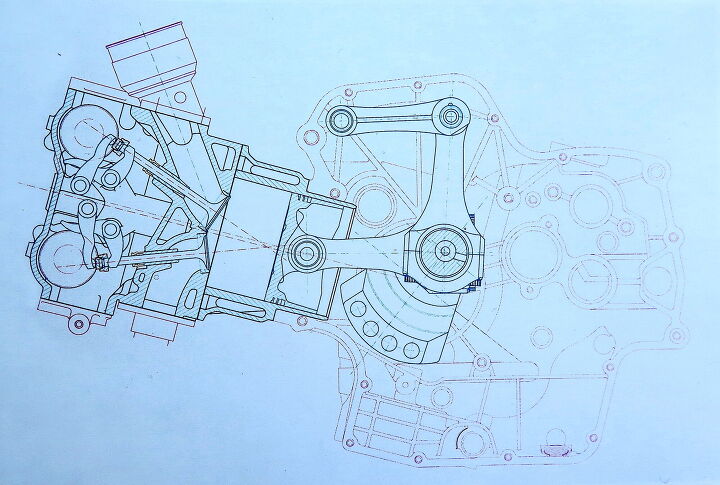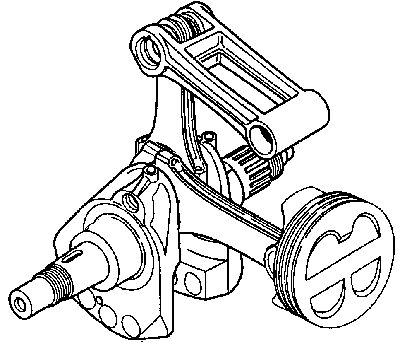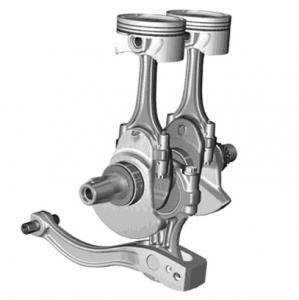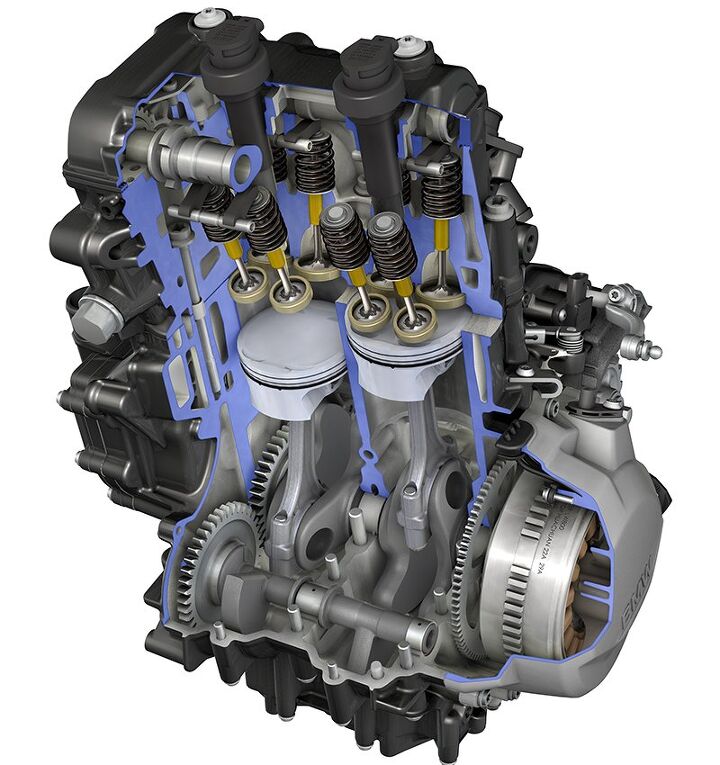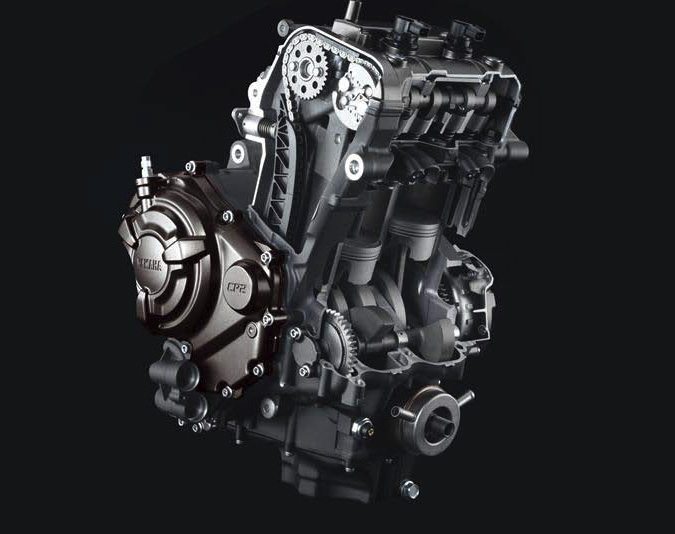Motorsports Racing News & Blog Articles
Ask MO Anything: Why didn’t the Ducati Supermono just use Normal Counterbalancers?
Following our recent Falloon File about the lovely and talented little Ducati Supermono, Commenter Bob wanted to know: “Why did Bordi use an extra connecting rod instead of the usual balance shafts? BMW had a parallel twin with a third con rod for the same reason. I would be interested in reading a technical analysis of those motors.”
Dear Bob,
Interesting. At first, I guessed Ducati’s Chief Engineer Massimo Bordi probably decided to use a dummy cylinder because he already had a stack of V-twin engine cases lying around, but that idea is quickly out the window when you remember the super lightweight Supermono in fact got its own cases, made from magnesium even.
For background, the limiting factor for most single-cylinder engines is rpm; one big piston rising and falling by itself is (was) hard to balance past 6000 rpm or so, which means debilitating vibration coursing through bike and rider just before something breaks. The easy solution of course, is more and smaller pistons. But for some reason, Sound of Singles got to be a really competitive series around about the late ‘80s, and Ducati wanted in.
Bordi first addressed the vibration issue by simply using a dummy piston in a 90-degree Ducati L-twin (the vertical one in this case) without a head. But lugging along an extra piston that did no work also created drag, horsepower loss, and resentment from the working piston. No good for a racing motor. And that’s when Bordi settled on the doppia bielletta, or double connecting rod system. He didn’t invent it, he just adopted it for the Supermono from a diesel application – Falloon says it’s the first time it was used on a gasoline engine.
Though the Supermono got its own cases, the real work on the four-valve heads and the rest of the top end had already been done on Ducati’s groundbreaking liquid-cooled fuel-injected 851 and 888 L-twins. With vibration controlled, the Supermono’s lone oversquare cylinder was then cleared for take-off toward 11,000 rpm just like those Twins, unheard of for a Single.
BMW, too
That’s right, BMW did sort of the same thing with the dummy connecting rod in its 2008 F800 engines, one of its least inspiring efforts. Even a dummy connecting rod can’t do much for a big old-school 360-degree Twin, except to slightly quell its buzz.
Ten years later, in 2018, BMW realized the error of its ways and ditched the dummy rod for a 270-degree crank design with a balance shaft spinning two counterweights down low ahead of the crank. Much more aurally pleasing and more fun to ride, too.
It’s good to know a good thing when you see it, and Yamaha’s first FZ-07 engine, in 2015, was (and is) a great thing. BMW’s was the sincerest form of flattery.
But we digress…
When it comes to powerful, smooth-running Singles, nothing we’ve ridden compares to KTM’s LC4 Single. The last 690 Duke we dynoed extracted nearly 70 rear-wheel horsepower from its lone 105mm piston (80mm stroke), which was exactly the same power as the above-mentioned MT-07 it beat out in that 2016 comparison, along with a Suzuki SV650. Just as light weight was the Supermono’s money maker, the 345-pound Duke absolutely fat-shamed the 397-lb Yamaha and the 430-lb SV. In fact, that 2016 model year was when KTM really perfected the bike’s 693 cc Single.
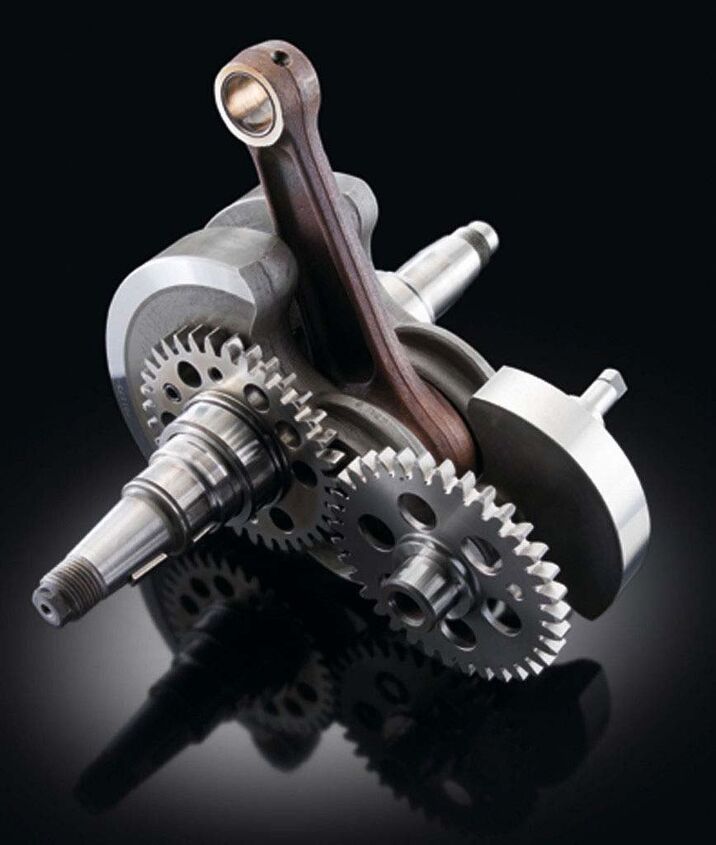
Instead of a dummy connecting rod, the LC4’s main counterbalancer spins opposite of the crank, at the same speed, to cancel out primary imbalance. Note how the counterbalancer will occupy the connecting rod’s space 180 degrees from now for compactness. A bigger bore and shorter stroke that year meant less reciprocating mass to balance. The KTM engine definitely has more spinning mass than the Supermono’s single con-rod, but its near-total vibration cancellation of a much bigger piston is worth it.
Our beloved Brasfield, a human E-string of vibration detection, came back from the bike’s launch singing its praises: The new 690 engine is otherworldly smooth. Yes, a high-frequency tingle moves into the pegs and the grips vibrate at super-high rpm, but in the real-world usable range where the engine spends most of its time, the result of the KTM engineers’ efforts is astoundingly obvious. Out on the road, the pulse felt from the engine feels more like that of a Twin than a Single. At highway cruising speeds of around 80 mph and higher, I downshifted from sixth to both fifth and fourth in search of the vibes that made the old Duke unsuitable for any extended highway use, without ever finding them.
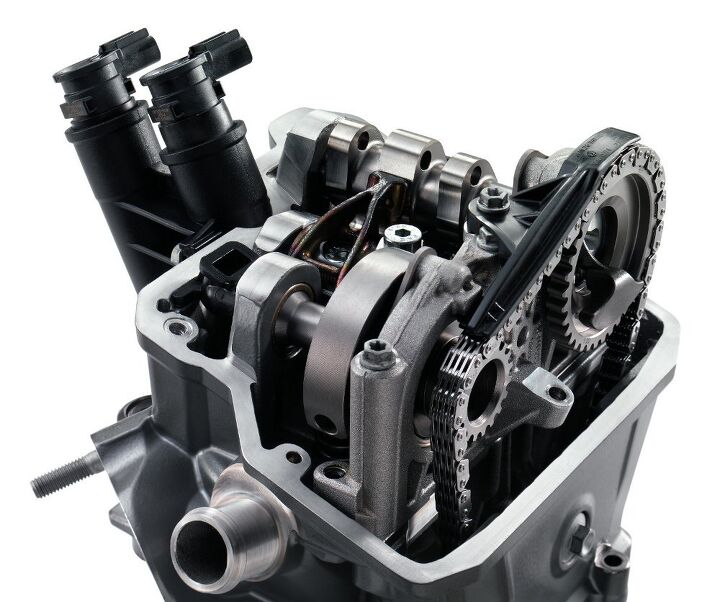
Upstairs in 2016, another crank-speed counterbalancer took up residence where the exhaust cam formerly resided… according to our expert in Italy, “this is a first order primary balance shaft that reduces the imbalance of the crankshaft and the rocking couple created by the crankshaft/main balance shaft positions.”
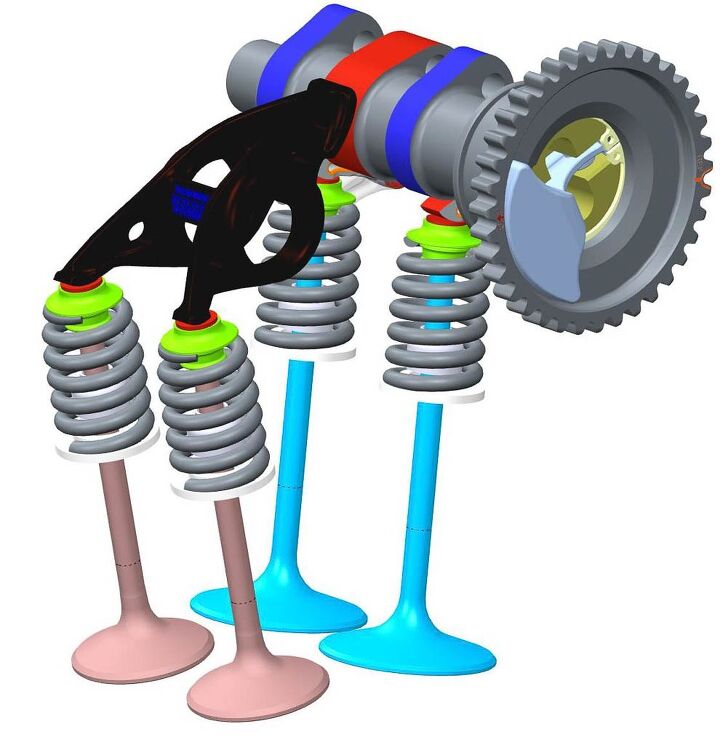
A new central lobe on the intake cam works the exhaust valves via forked rocker. The counterweight Inside the cam gear operates the automatic decompression mechanism for easier starting.
Answer the Question!
Nobody knows why Massimo Bordi chose the dummy connecting rod scheme instead of internal counterbalancers, which were already common in the 1980s. So we interrupted MV Agusta R&D Director Brian Gillen’s vacation.
Who tells us:
Sources of primary vibrations in multi-cylinder engines can be attributed to three major imbalances:
– translational forces due to the piston, wrist pin, rings and roughly 1/3 of the connecting rod mass.
– rotational forces due to the crankshaft counterweights, crankpin and roughly 2/3 of the connecting rod mass.
-– rotational moment due to the off-set between the cylinder centers
The Supermono project originally had a dummy piston on the vertical cylinder (without a cylinder head) to mimic the primary balance of a v-twin. But, the friction created by this second piston robbed a lot of power. They then came up with the idea of substituting the “translating” mass of the vertical piston with an additional connecting rod to eliminate the sliding friction of the second piston and rings. This allowed Bordi and his team to balance the first order primary vibrations at a relatively low cost and complexity.
Following the technical presentation, Brian said what we all long suspected:
Bordi’s thoughts were to always be different, to stand out from the crowd.

Try to be like MV Agusta’s R&D Director Brian Gillen when you grow up, who we reached during Italy’s August vacation, in Greece, even though he’s from Pennsylvania: We’re vacationing at the beach, but in Greece rather than Italy, on the island of Paros – a bit of boating, taking in the epic history and eating amazing foods and wine! PS: I’m sitting on the boat drinking Greek beer while the family is having a swim, so I can’t be held accountable for any errors in this email!
Also, never underestimate the power of office politics. Massimo Bordi won the internal debate about producing the Supermono, and conceptualized a range of light, inexpensive motorcycles that might flow from it. Others in management were less convinced. From this article at couredesmo, we learn that Claudio Domenicali, who was general manager of product and head of Ducati Corse at the time (and CEO now, and whose first job at Ducati was project leader and track engineer on the Supermono), said: Single cylinders are missing something. They vibrate too much and don’t convey that adrenaline thrill when you open the gas.
Okay, then. L-twins it was for the next three decades. But I think the neighbors across the border in Austria have proven how good a Single can be. Really, extremely good. And light. What might have been…
Send your moto-related questions to This email address is being protected from spambots. You need JavaScript enabled to view it.. If we can’t answer them, we’ve taken the Hypocritic Oath and at least will attempt to do no harm in the time it takes to seek out a believable answer. And remember, we’re not real journalists, we’re motojournalists. These answers are for entertainment purposes only. Ask your doctor if you’re healthy enough to read MO.
Become a Motorcycle.com insider. Get the latest motorcycle news first by subscribing to our newsletter here.
The post Ask MO Anything: Why didn’t the Ducati Supermono just use Normal Counterbalancers? appeared first on Motorcycle.com.
Copyright
© Motorcycle.com


